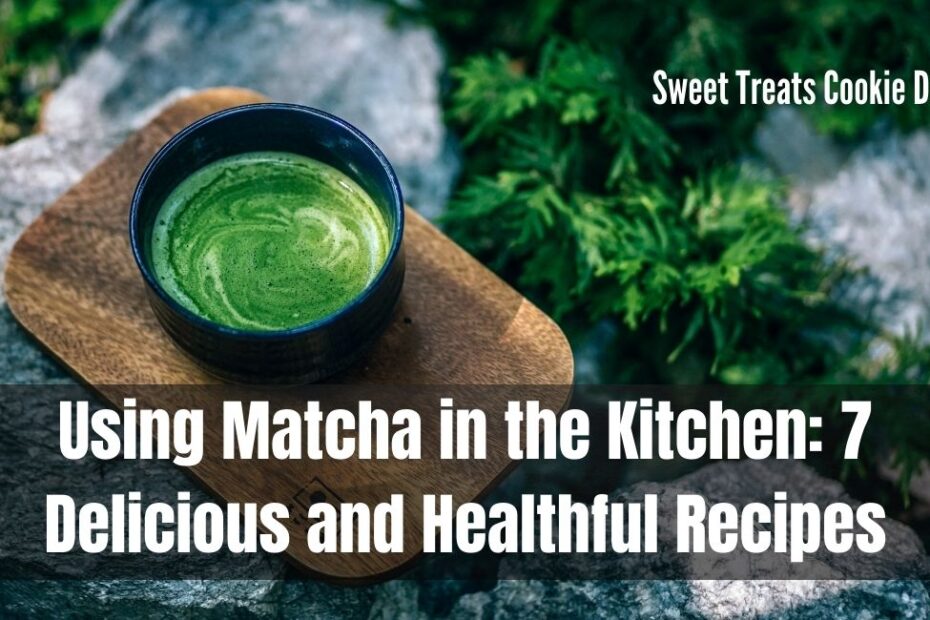Matcha green tea’s antioxidant goodness can be enjoyed in a variety of ways in the home kitchen throughout the year.
Authentic matcha tea powder, which is grown and processed according to old Japanese tradition, can be a great addition to your diet.
In 1988, while residing at a Buddhist monastery in Kyoto, Japan, I first saw this traditional green superfood. At the link, you can learn more about the health lessons I learned on my trip to Japan.
At the time, I had no idea what the somewhat bitter, intensely invigorating dark green beverage that the monks drank every morning was.
Later, I realized that they painstakingly planted, harvested, and made matcha powder in accordance with thousands of years of tradition!
When matcha became available in the West, I was ecstatic to be able to incorporate it into my regular diet as an occasional cure and energy boost that helps clear mental cobwebs without causing jitters.
This is due to the presence of L-theanine, a mood-boosting and nerve-calming amino acid.
Its presence in tea reduces the rate of caffeine absorption in matcha to a trickle. Even if you are caffeine sensitive like me, you can enjoy the medical benefits without any negative side effects.
Consider Authentic Brands
Because matcha is technically a green powder, it’s important to get it as soon as possible.
As a result, I prefer to buy farm direct matcha, which does not pass via the industrial food chain.
Consumers, however, beware! On the market, there is a lot of fake matcha! Organic matcha is also well worth the additional cost. Nonorganic has the potential to have a high fluoride content.
Here are four brands to think about, all of which I’ve tried and tested over the years.
- Ceremonial Matcha Synergy
- Matcha Ceremonial Grade Jade Leaf (first harvest, teahouse edition).
- coordinatinga (helpful for those who want full strength matcha paired with moringa powder for additional antioxidant benefit).
- Matcha Ceremonial Grade Decaf (great for afternoon or evening use)
Incorporating Matcha into Your Cooking
Once you’ve chosen a decent matcha brand and are ready to get started, here are some of my favorite ways to use it at home that I’ve found to be both healthful and delicious!
Tea
Matcha is traditionally prepared by placing a teaspoon in a mug and blending with a cup of hot water. It’s recommended to use water that’s no hotter than 170 degrees Fahrenheit/70 degrees Celsius.
Preventing clumping is as simple as sifting the matcha powder first.
Shot of Matcha
If the antioxidant bitterness of matcha appeals to you, try it as a shot rather than a cup of tea.
Only a quarter cup of hot water per teaspoon of matcha should be blended.
It’s vital to maintain the water below 170 F/ 70 C, just like with the tea procedure. This is especially critical if you want to down the shot all at once!
These proportions substantially boost the strong flavor, which some individuals adore.
Latte Detox
On frigid mornings, I enjoy sipping a fruit-sweetened matcha latte after a hearty breakfast.
If you want, use maple syrup instead of the fruit. In place of dairy, you can use any nutritious milk alternative you like.
Matcha iced
In the summer, I like to have a decaf matcha frappe in the afternoon as a cold and pleasant drink.
You can also add an extra cup of cold filtered water to a hot matcha shot as suggested above. After that, pour over ice.
Smoothie
Add a half teaspoon to your favorite smoothie if you want the health benefits of matcha but not the flavor.
If you need some inspiration, here are some of my favorite healthy smoothie recipes!
Baking
Did you know that matcha powder may be used in baked goods?
If you don’t like the bitter taste, this is another method to reap the antioxidant advantages.
Add 1-3 tablespoons of matcha per cup of flour as a rough rule of thumb.
Desserts Frozen
Matcha is a superfood addition to frozen delicacies like ice cream, similar to baking.
To avoid compromising the intended flavor, I recommend using only one teaspoon of matcha per cup of milk or cream.
If you haven’t made ice cream before, try this raw vanilla ice cream recipe or this dairy-free peanut butter ice cream recipe devised by a friend of mine.
Are you a matcha fan? What’s your favorite way to consume its bitter, antioxidant benefits?
